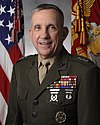The United States Armed Forces are the military forces of the United States. The armed forces consist of six service branches: the Army, Marine Corps, Navy, Air Force, Space Force, and Coast Guard. All six armed services are among the eight uniformed services of the United States.

The Defense Information Systems Agency (DISA), known as the Defense Communications Agency (DCA) until 1991, is a United States Department of Defense (DoD) combat support agency composed of military, federal civilians, and contractors. DISA provides information technology (IT) and communications support to the President, Vice President, Secretary of Defense, the military services, the combatant commands, and any individual or system contributing to the defense of the United States.

The United States Strategic Command (USSTRATCOM) is one of the eleven unified combatant commands in the United States Department of Defense. Headquartered at Offutt Air Force Base, Nebraska, USSTRATCOM is responsible for strategic nuclear deterrence, global strike, and operating the Defense Department's Global Information Grid. It also provides a host of capabilities to support the other combatant commands, including integrated missile defense; and global command, control, communications, computers, intelligence, surveillance, and reconnaissance (C4ISR). This command exists to give "national leadership a unified resource for greater understanding of specific threats around the world and the means to respond to those threats rapidly".

NetOps is defined as the operational framework consisting of three essential tasks, Situational Awareness (SA), and Command & Control (C2) that the Commander (CDR) of US Strategic Command (USSTRATCOM), in coordination with DoD and Global NetOps Community, employs to operate, manage and defend the Global Information Grid (GIG) to ensure information superiority for the United States.

The Marine Corps Systems Command (MCSC) is the acquisition command of the United States Marine Corps, made up of Marines, sailors, civilians and contractors. As the only systems command in the Marine Corps, MCSC serves as Head of Contracting Authority and exercises technical authority for all Marine Corps ground weapon and information technology programs. MCSC is headquartered at Marine Corps Base Quantico.
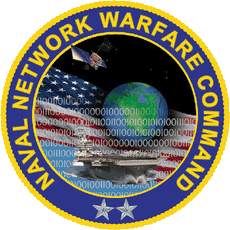
The Naval Network Warfare Command (NAVNETWARCOM) is the United States Navy's information operations, intelligence, networks, and space unit. Naval Network Warfare Command's mission is to execute, under Commander TENTH Fleet Operational Control, tactical-level command and control of Navy Networks and to leverage Joint Space Capabilities for Navy and Joint Operations.
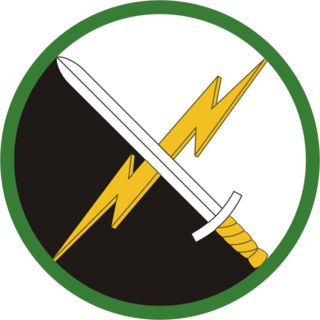
The 1st Information Operations Command (Land), formerly the Land Information Warfare Activity Information Dominance Center (LIWA/IDC), is an information operations unit under the operational control of U.S. Army Cyber Command (ARCYBER) and headquartered at Fort Belvoir, Virginia.
A cyber force is a military branch of a nation's armed forces that conducts military operations in cyberspace and cyberwarfare. The world's first independent cyber force was the People's Liberation Army Strategic Support Force, which was established in 2015 and also serves as China's space force. As of 2022, the world's only independent cyber forces are the PLA Strategic Support Force, the German Cyber and Information Domain Service, Norwegian Cyber Defence Force, and the Singapore Digital and Intelligence Service.

The Commander, U.S. Marine Corps Forces Command (COMMARFORCOM), headquartered at the Naval Support Activity Hampton Roads in Norfolk, Virginia, commands service retained-operating forces; executes force sourcing and synchronization to affect force generation actions in the provisioning of joint capable Marine Corps forces, and directs deployment planning and execution of service retained-operating forces in support of Combatant Commander (CCDR) and service requirements; serves as Commanding General, Fleet Marine Force, Atlantic and commands embarked Marine Corps forces; coordinates Marine Corps-Navy integration of operational initiatives and advises CDR U.S. Fleet Forces Command (USFF) on support to Marine Corps forces assigned to naval ships, bases, and installations; conducts Service directed operational tasks as required. COMMARFORCOM is also the Commander, Marine Corps Forces Northern Command (MARFORNORTH), the Marine service component command of U.S. Northern Command.
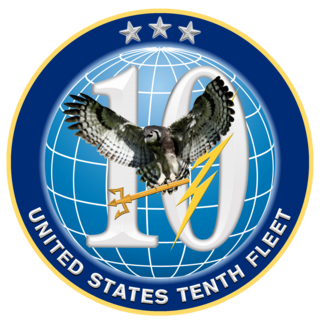
The U.S. Tenth Fleet is a functional formation and a numbered fleet in the United States Navy. It was first created as an anti-submarine warfare coordinating organization during the Battle of the Atlantic in the Second World War. It was reactivated as a force provider for Fleet Cyber Command on 29 January 2010. U.S. Tenth Fleet serves as the numbered fleet for U.S. Fleet Cyber Command and exercises operational control of assigned naval forces to coordinate with other naval, coalition and Joint Task Forces to execute the full spectrum of cyber, electronic warfare, information operations, and signal intelligence capabilities and missions across the cyber, electromagnetic, and space domains.

Marine expeditionary unit (special operations capable) (MEU(SOC)) is a program created by the United States Marine Corps (USMC) and the United States Navy (USN) in 1985 for Marine expeditionary units (MEU). The program enhances MEUs providing them with additional training and equipment to become certified as special operations capable with a Maritime Special Purpose Force (MSPF). The designation special operations capable is unique to the Marine Corps and means in relation to special operations. The role of a MEU(SOC) however is not equivalent to the special operations role of special operations forces. Although considered special operations capable a MEU(SOC) does not form part of the United States Special Operations Command (USSOCOM) established in 1987 or the United States Marine Forces Special Operations Command (MARSOC) later established in 2006.
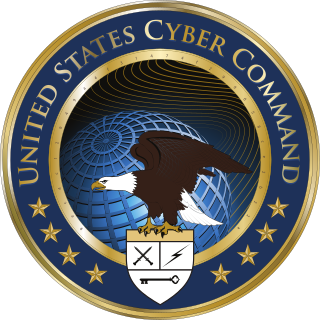
United States Cyber Command (USCYBERCOM) is one of the eleven unified combatant commands of the United States Department of Defense (DoD). It unifies the direction of cyberspace operations, strengthens DoD cyberspace capabilities, and integrates and bolsters DoD's cyber expertise which focus on securing cyberspace.

The U.S. Army Cyber Command (ARCYBER) conducts information dominance and cyberspace operations as the Army service component command of United States Cyber Command.
Cyberwarfare is the use of computer technology to disrupt the activities of a state or organization, especially the deliberate attacking of information systems for strategic or military purposes. As a major developed economy, the United States is highly dependent on the Internet and therefore greatly exposed to cyber attacks. At the same time, the United States has substantial capabilities in both defense and power projection thanks to comparatively advanced technology and a large military budget. Cyber warfare presents a growing threat to physical systems and infrastructures that are linked to the internet. Malicious hacking from domestic or foreign enemies remains a constant threat to the United States. In response to these growing threats, the United States has developed significant cyber capabilities.
The 2011 U.S. Department of Defense Strategy for Operating in Cyberspace is a formal assessment of the challenges and opportunities inherent in increasing reliance on cyberspace for military, intelligence, and business operations. Although the complete document is classified and 40 pages long, this 19 page summary was released in July 2011 and explores the strategic context of cyberspace before describing five “strategic initiatives” to set a strategic approach for DoDʼs cyber mission.

The U.S. Fleet Cyber Command is an operating force of the United States Navy responsible for the Navy's information network operations, offensive and defensive cyber operations, space operations and signals intelligence. It was created in January 2010 "to deter and defeat aggression and to ensure freedom of action to achieve military objectives in and through cyberspace". U.S. Tenth Fleet was simultaneously reactivated as its force provider. Since it was founded, the command has grown into an operational force composed of more than 16,000 active and reserve sailors and civilians organized into 27 active commands, 40 Cyber Mission Force units, and 27 reserve commands around the world.
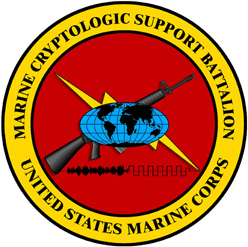
The Marine Cryptologic Support Battalion (MCSB) is a Marine Corps Intelligence battalion of the United States Marine Corps. The battalion headquarters are located in Fort George G. Meade, Maryland.

Vincent Raymond Stewart was a Jamaican-born American lieutenant general in the United States Marine Corps who served as Deputy Commander at United States Cyber Command. He previously served as the 20th Director of the Defense Intelligence Agency (DIA). LtGen Stewart, who held that post from January 23, 2015 through October 3, 2017, was the first African American, first Jamaican American and first Marine to hold the position of Director of the DIA. LtGen Stewart was the 2023 William Oliver Baker Award Recipient presented by the Intelligence and National Security Alliance.

The 67th Cyberspace Wing is a United States Air Force wing stationed at Lackland Air Force Base, Texas. It was activated in October 1993 as a military intelligence unit and is assigned to the Sixteenth Air Force.

